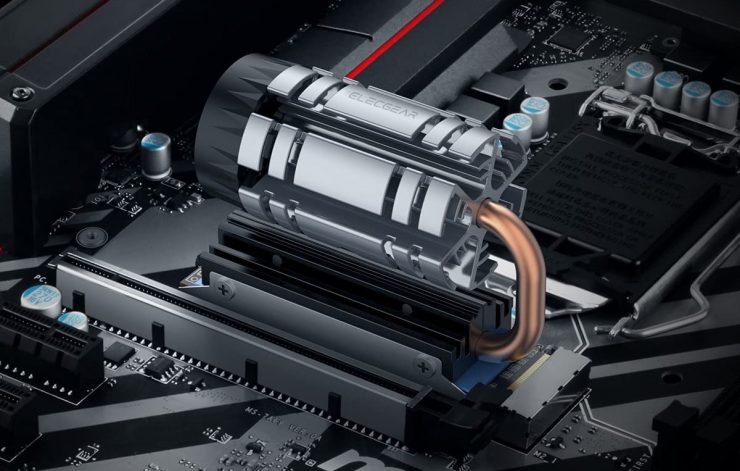The first SSD drives were promoted as being much more energy efficient than HDDs. As the speeds increased with each generation, so did the power requirements, and this gradually generated much more heat. Some high-end Gen 4 units already benefit greatly from dedicated cooling systems, and we’re likely to see that trend become more widespread with future SSDs.
Cooling of some sort will be a must as PCIe 5 devices begin to hit the market.
Sebastien Jean, technical director of Phison, analyzed the situation in an interview:
“As the speed continues to increase with each new generation, our challenge will continue to be managing heat,” said Jean.
As a general rule of thumb, Jean points out that each additional GB/s of speed offered by an SSD requires approximately one additional watt of power. “You know you need more cooling when you benchmark your SSD and the performance starts at 7GB/s and then suddenly goes to 500MB/s. When you see that quick drop, it’s very likely that the SSD has entered a sleep mode. thermal throttlingJean added.
One way to reduce power requirements is to reduce the number of NAND channels used by the SSD.
“In practical terms, eight lanes are no longer needed to clutter the Gen4 and even Gen5 PCIe interface. You can potentially saturate the host interface with four NAND channels, and reducing the number of back-end channels reduces total SSD power typically by 20 to 30 percent,” said Jean.
Another method is to use a smaller process node, for example going from 16nm to 7nm. Phison points out that smaller process nodes can operate at higher frequencies with lower voltage. The smaller node units also require less power to cycle the transistors, further reducing the power used and ultimately the heat generated.
Despite the improvements, Jean said he expects to see passive heatsinks with Gen 5 devices. “Eventually, we’ll also need a fan that pushes air directly over the heatsink,” he added.
While not ideal, passive/active cooling is feasible with most configurations. However, laptops and small desktops may present more of a challenge due to their size.















